Guy Carpenter Documents the Beautiful Life of Sheep With No Photoshop
All images by Guy Carpenter. Used with permission.
“Of course, the vast majority of my professional life came to a crashing halt in 2020,” relates professional photographer Guy Carpenter to us in an interview. “I spent a few weeks in March and April 2020 at home, reading a lot of books. I barely touched a camera.” Guy’s words resonate with us as it speaks volumes to the general mental state of photographers. Like many other passionate photographers though, Guy also shoots for fun. So when his godmother asked him to come help with their upland sheep farm in Yorkshire Dales, he brought the camera along.
The Essential Photography Gear of Guy Carpenter
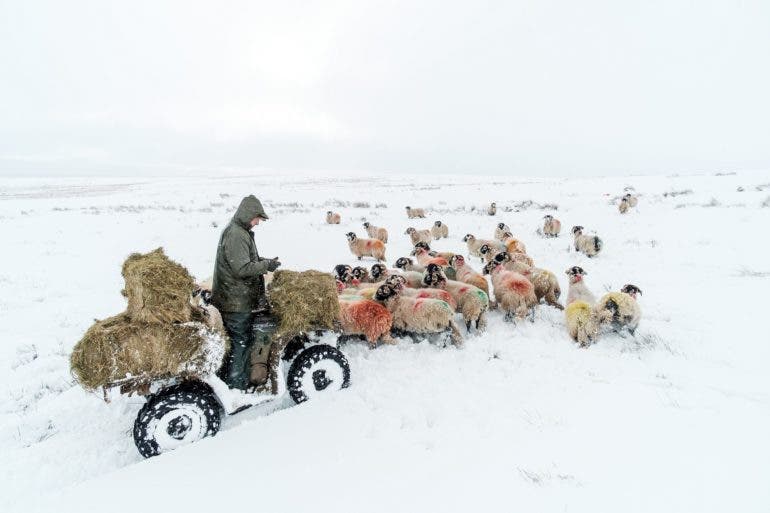
Guy says:
In early 2016, after several years of being curious about the Fuji system, I bought myself a Fujifilm X-Pro1 with 35mm and 18mm lenses. I loved it immediately. Within a week I’d sold all my Pentax gear. Since then I have chopped and changed a bit but now use a pair of X-T2s with a variety of lenses, including my original and much loved 35mm f1.4. I have only prime lenses until the telephoto range: I’m an evangelist for the creativity that prime lenses force from users.
As well as the Fuji gear, I’ve got a Mavic Pro 2 drone. It’s a remarkable bit of kit that I’m always grateful to have when I need it. It has flown in all kinds of conditions, including a blizzard, and not let me down. The sensor and lens on it are pretty incredible, given its size.
I don’t believe that gear alone is the prime factor in producing any photograph, but some gear seems to inspire more than others, and I think I found that inspiration with Fujifilm cameras. Though the trend they set seems to be creeping out to other manufacturers, I think Fujifilm were the first to return to all mechanical controls, rather than scroll wheels and shooting modes etc. For beginners, that can really help them learn the fundamentals of photography. And for those with more experience, it brings you back to the fundamentals of photography, which is what it did for me. I learned a new appreciation for simple but effective imagery, always created solely within the camera, without any gimmickry or digital manipulation. Don’t get me wrong: I shoot RAW and I process everything I take in Lightroom, but the difference between a straight out of camera JPG and my final JPG is usually minimal: Lightroom is obviously the digital equivalent of an analog darkroom, and I try to use it as such: photography is not about computer-generated trickery.
So, Fujifilm helped me to return to photographic basics, and in doing so, it made me stop and evaluate what I was doing from a business perspective too. Landscapes certainly weren’t going to make me a living. I was finding, particularly with the Fujifilm cameras, that I much preferred to be photographing people.
Talk to us about how you got into photography.
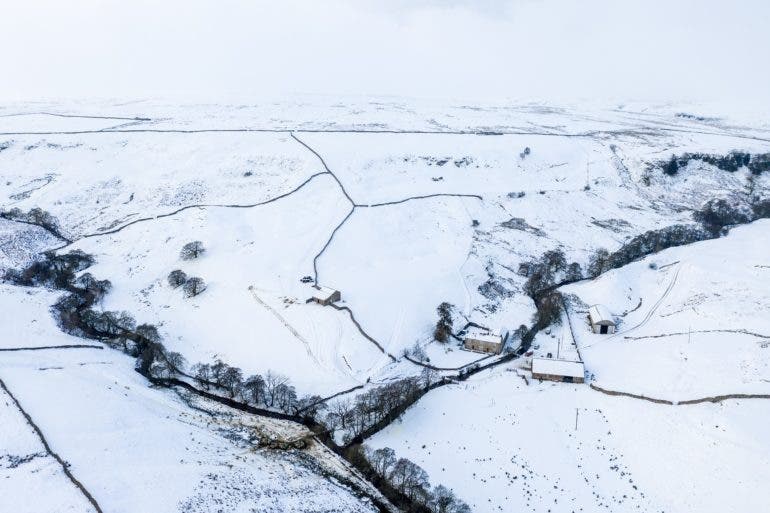
My first camera was an Olympus Trip 35, which I still have. Both my parents were keen photographers, and in fact, I have photographs taken by members of my mother’s family going back to the late 19th century. Last year my mother gave me one of my grandmother’s cameras, a Kodak No. 1 Pocket, which can be loaded as-is with 120 format film. I shot and developed a few rolls of that recently, which was quite a thrill using a 100-year-old camera that still works perfectly today.
So photography definitely has some family history for me, and I enjoyed it as a child, but it rather vanished off my radar for about a decade or so. In my early twenties, I did some teaching English abroad, and before I headed off to start a job in Istanbul in 2007, I bought myself a Pentax K100D. While in Istanbul I muddled through learning how to use it, and with hindsight I can say that while my technical knowledge was still very limited, I did get some shots with it that I am still proud of today. I can also say that the Pentax K100D was a great camera, as I gave a tutorial a few years ago with somebody who had one and I was very impressed with its RAW files!
After teaching English I landed, through chance more than anything, into working in finance for nearly ten years, for Barclays Bank, and then as an analyst for an American hedge fund. However, I was very clear with myself from the outset that it wasn’t what I wanted to spend my life doing, so in late 2014 I decided to pack it in and try making a career in photography – photography had been becoming more and more of a hobby over the years. Though again, looking back with hindsight, I can see I had a lot to learn.
So I moved back up to my homelands of the Yorkshire Dales, in northern England. I had some vague idea of doing landscape photography, but I didn’t quite manage to re-tool myself to self-employment during that first year. Instead, the next step in my photography was probably catalyzed by a particular brand of gear.
When you won the runner up position in our contest with Leica, I was super excited to hear about this project. First off, I love sheep. But it’s not the typical stuff that you photograph. So first off, talk to us about the portraiture, weddings, and documentary type of stuff you normally do.

I shot my first wedding as somebody’s second shooter in mid-2016 and surprised myself by really enjoying it. After that, I retooled myself to be more of a wedding and commercial business, and actually, I loved it. Making couples happy with a document of their day, and helping companies prosper with interesting imagery. All of it with a low key, professional, down to earth approach. In the intervening years, I’ve picked up a good amount of work, mostly on the basis of recommendations.
What made you get into documentary work?
Hopefully, like anybody who picks up a camera professionally, I also love photography as a hobby. The evidence of this is my blog, which literally has a new post most days. Over the past few years, I have traveled quite a bit, both around the UK and the rest of the world, and I have enjoyed making a topographical record of the places I visit. I think if there is one aspect of my personality and photography that I can say I am pleased with, it is the ability to find interest in what others might find “every day.” I do find interest in the commonplace, everyday aspects of life – particularly when the commonplace and every day in one place can be so different to another. What seems mundane to one person is entirely exotic to another, and I’ve tried to keep that principle in all the documentary photography I do. I’ve worked in Rio De Janeiro, Rio Santa Marta, China, Venice, and Dales.

I apply that principle when I have been fortunate enough to travel, but I also apply the principle to things close to home. There is interest everywhere, and where I live in the north of England has a huge variety of things to photograph. Some, like the annual gathering of Travellers in Appleby to trade horses are big events, and it is nice to try and capture them in ways not done before.
Others are more routine. People just getting on with their jobs, whatever they might be, without notice from most. But some of those people are doing things that other people might find remarkable and alien. So a few years ago I produced a book called “Dalesfolk”, where I went out to photograph and interview nearly 80 people who had some role to play in the fabric of the rural society I am part of. It was a huge amount of work, fitted in among the work I was actually making an income from. Certainly, in the end, it is a project that cost me money to produce (even with a successful Kickstarter to raise funds for printing), but I don’t regret doing it. I think it’s a historical document, showing the realities of Dales life in the early 21st century – we may be famous for the idyll portrayed in All Creatures Great and Small (now back on television in a 2020 remake), but the truth is, Dales life can be very tough.
Now, how the heck did you get into photographing sheep?
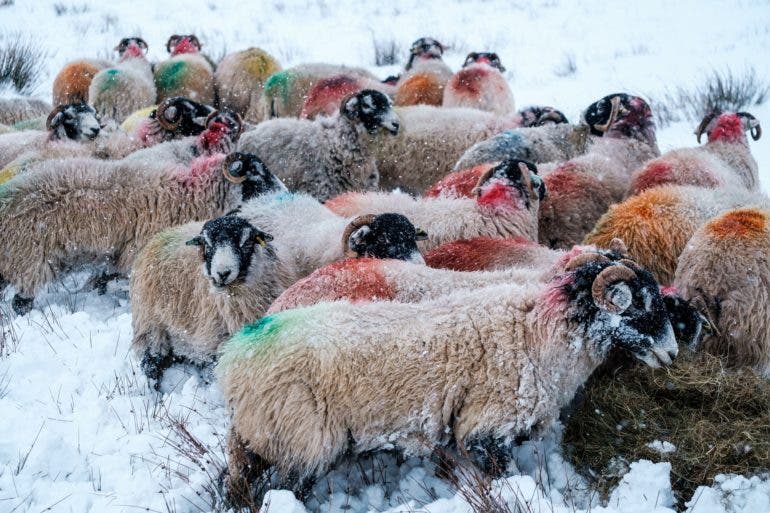
Of course, the vast majority of my professional life came to a crashing halt in 2020. I spent a few weeks in March and April 2020 at home, reading a lot of books. I barely touched a camera. Then I received a call from my godmother, who along with her husband live at Kexwith, an upland sheep farm in the Yorkshire Dales. It was lambing time, and they asked for a bit of help.
I’d been up to visit Kexwith many times. It’s about as remote as you can get in the Yorkshire Dales – all alone in their own little valley, with bleak, high moors surrounding them, rising to over 500m above sea level. It’s a beautiful place, and life on a hill sheep farm is always interesting. Now I was getting to go every day and help out, always with a camera strung around my neck. Usually the Fujifilm X-T2 and 18mm lens… the lens and camera received an absolute hammering but never missed a beat. Helping out with lambing turned into helping out with more things as the farming year progressed, and I got to document all of it. At this time of year, in winter, the sheep are back out on the moor: the local breed of Swaledale sheep are incredibly tough, independent creatures, and once they have been “tupped” (impregnated by a ram, known locally as a tup), they go back on the moor to look after themselves for the winter, often in fairly extreme weather conditions. Hence why, the other day, I was speeding across a moor in whiteout conditions on a quad bike with a couple of bales of hay, looking for groups of sheep to feed.
I have seen the whole life cycle of the sheep over the year, and it has been fascinating to see the joys and hardships of life surviving in such a place. Not many people get to see that, and despite the obvious professional setbacks of the last year, I have to be grateful to have taken part in life at Kexwith.
There’s a famous saying about the idea of not always fixating ourselves on the end results, but also enjoying the journey. And for you, this is totally a journey. What are you finding most enjoyable about this break from your normal work?
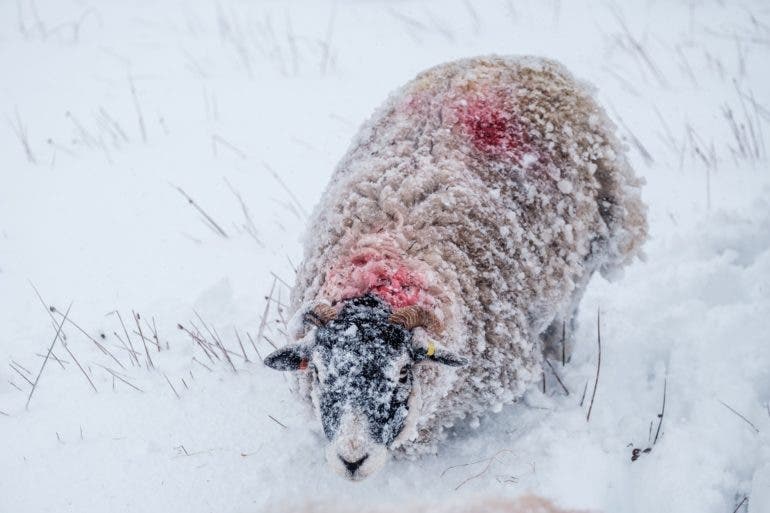
Obviously, the future is a bit concerning. For myself, and vast numbers of other people who have been economically affected by actions taken in 2020. Unfortunately, I am of the opinion (and having quite a bit of experience in the analysis I don’t think my opinion is worthless) that the UK, in particular, is heading to a pretty bleak place, economically, which will have repercussions that ripple throughout society. The future might not be very cheerful for many people for a long time to come – creative professionals, in particular, are already feeling that. So, it’s a little hard to know what to expect from the future. My girlfriend is Philippa Mo, one of the best violinists in the country, with a long history of international performance. Her career has similarly been impacted. At the moment it feels like hibernation, but will we all emerge into a world where our old talents have become redundant?
And you’ve used their wool for your own coat, yes? Your girlfriend made it, correct?
A couple of Christmasses ago my girlfriend bought me a remarkable book of photographs by Charles Freger, called “Wilder Mann”. It depicts folk costumes found around Europe, made from fleeces, animal skins, sacks, straw, all decorated with cowbells and bones. The costumes are part of local folklores bringing luck to harvests, and other such things. There are some truly remarkable costumes, all documented by Freger. I’d really recommend it.

This last Christmas, my girlfriend presented me with something rather unique. She had helped roll fleeces at Kexwith when the sheep were clipped in the summer, and she had kept a couple of bags of fleeces. It turned out that she was making them into a “wild man” costume for me: four fleeces, stitched onto a heavy jacket base, along with a folded card skull mask, White Park cattle horns, and a totem pole decorated with sheep skulls. It’s quite a sight.
After taking it out over the new year for its first outing into the wilds of the snowy Yorkshire hills, we decided it had to have a name. We came up with the “Shiversike”. Another way of saying “cold stream”. The Shiversike is our spirit for 2021. As well being some entertainment for me when I can put it on and stand on a hilltop to scare the life out of walkers. It’s quite a sight.
As I was putting these questions together, I keep having my breath taken away, genuinely and truly! Who were your influences? There’s some very cinematic yet painterly while balancing the craft of documentary. It’s rare to see this level of talent and your work seriously excites me.
If people like my style, that always makes me very happy. I feel it’s a simple, descriptive style, and I always try and give true context to subjects. I’ve never spent the time learning how to properly use flash, so most of the time I work with available light, but I try and use available light creatively to try and add drama and feeling to a subject. Probably the most important aspect is always choosing the right lens for the subject. A different focal length used in exactly the same position will obviously give a totally different feel to a photograph, and despite being a dedicated prime lens user, I always try and choose what I feel is the best focal length for any situation. My usual favorites for the Fujifilm cameras being 12mm, 18mm, and 35mm. I’m definitely not averse to getting up close with a very wide lens – rules were meant to be broken, after all.

I didn’t really pay much attention to the works of other photographers until 2016 when I started slowly collecting photography books – I’ve now got quite a good collection. My favorite out of all of them would be Don McCullin. I have also very much enjoyed the work of Ernst Haas, Fred Herzog, and Sirkka-Liisa Konttinen. Anybody who can show a time and place with integrity, depth and an enquiring eye is worthy of great respect. I also enjoy the World Press Photo competition yearbooks, though I feel that the last few years have not been up to the standards previously set.
What helps you out in situations like this? I mean, think about it: you’re being taken aside from your normal photographic journey. Then you’re put into the freezing cold. Then you’re with all these animals. Personally, for me, I’d probably not pick the camera up for a while because I’d need to adjust.
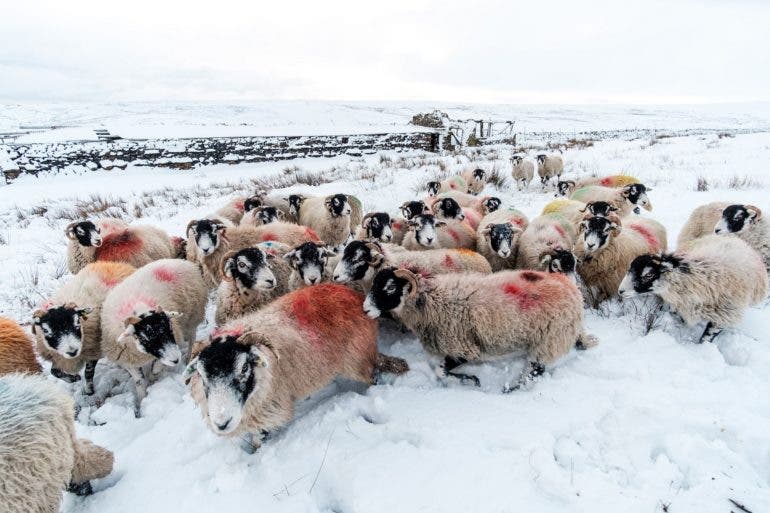
I probably have a mild case of obsessive-compulsive disorder. For instance, I’m quite particular about keeping my home neat and tidy. And also, I can feel a bit depressed when I haven’t been taking photographs for a while. I enjoy having a camera with me and using it to show something interesting in the world, to the world. There isn’t a better tool available than photography to do that. At Kexwith I would be out in the cold and the wet, sliding about in the mud, with high winds driving rain into my face, but the camera would still be there by my side. I am not a “fair-weather” photographer, as it were: rather than solely pursuing “beauty”, I believe in getting out and showing the gritty side of the world, which can be beautiful too in its own way, and also usually far more interesting.
So really, I am very happy to fling myself and my camera into arduous conditions. Cold, wet, icy, snowy. I fell through a frozen lake alone in the arctic night a few years ago. I loved it. I rode around Rio de Janeiro on a scooter for a week, exploring the city, when so many people said I was going to get shot in the first five minutes. I think I’ve got quite a realistic appraisal of risk.

But the future right now is an unknown quantity, and I do worry about it. A couple of years ago I found myself in a city called Dewsbury, about an hour south of where I live. I was shocked at the deprivation evident, in a city in the United Kingdom, a developed nation. It was like the carapace of a place that is already dead inside, rotting and falling apart, but still with people living there, somehow surviving in a place with no future. I photographed the place because I felt it was important to show people things that are shocking like that – it is important not to turn our backs on inconvenient truths. At the moment it feels like my photographic future will be less about weddings and commercial work, and more about documenting the sorrowful decay of society. But hey. Somebody’s got to do it.
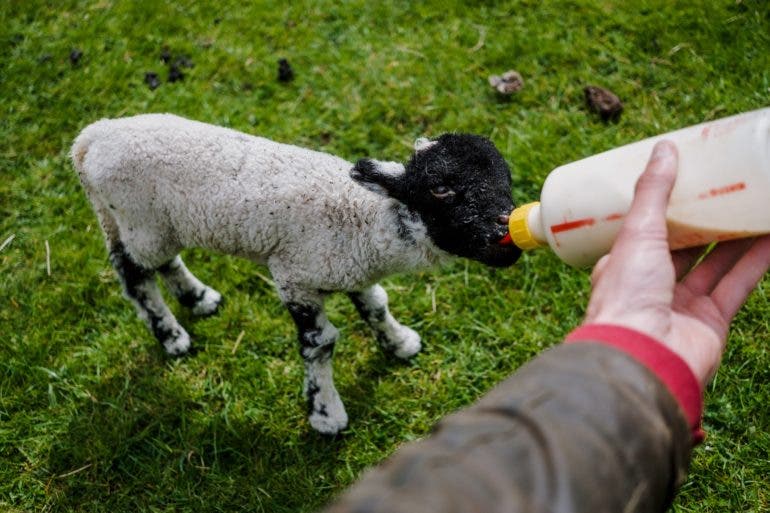
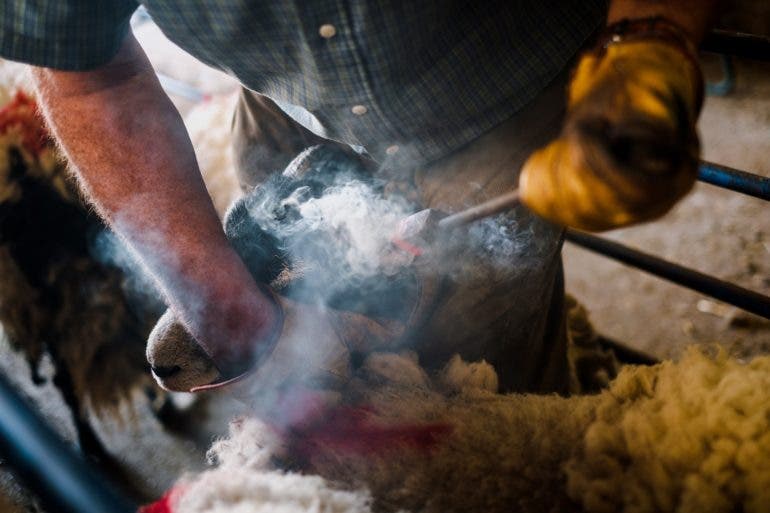

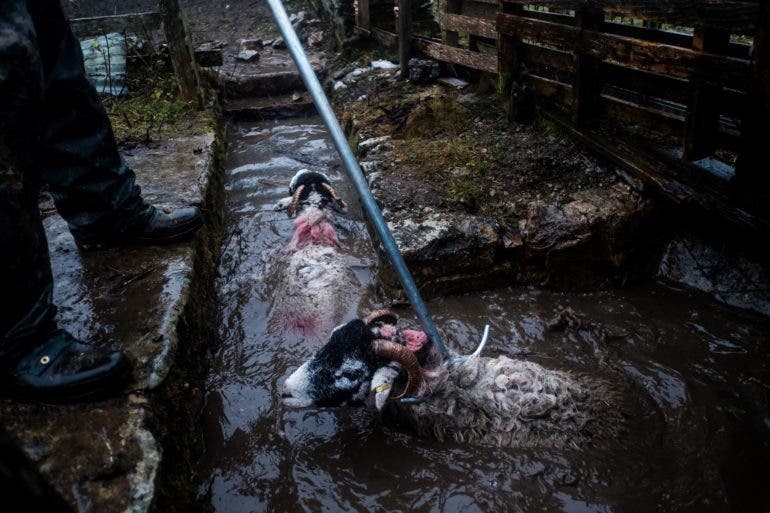


Want to be featured in our No Photoshop series? Here’s what we need to feature your work.